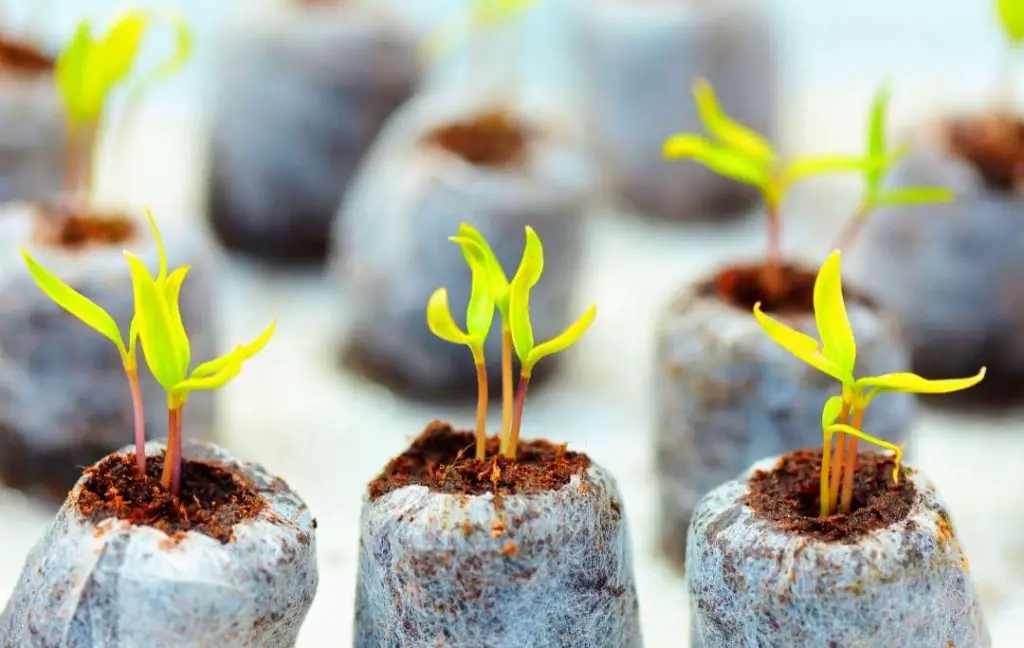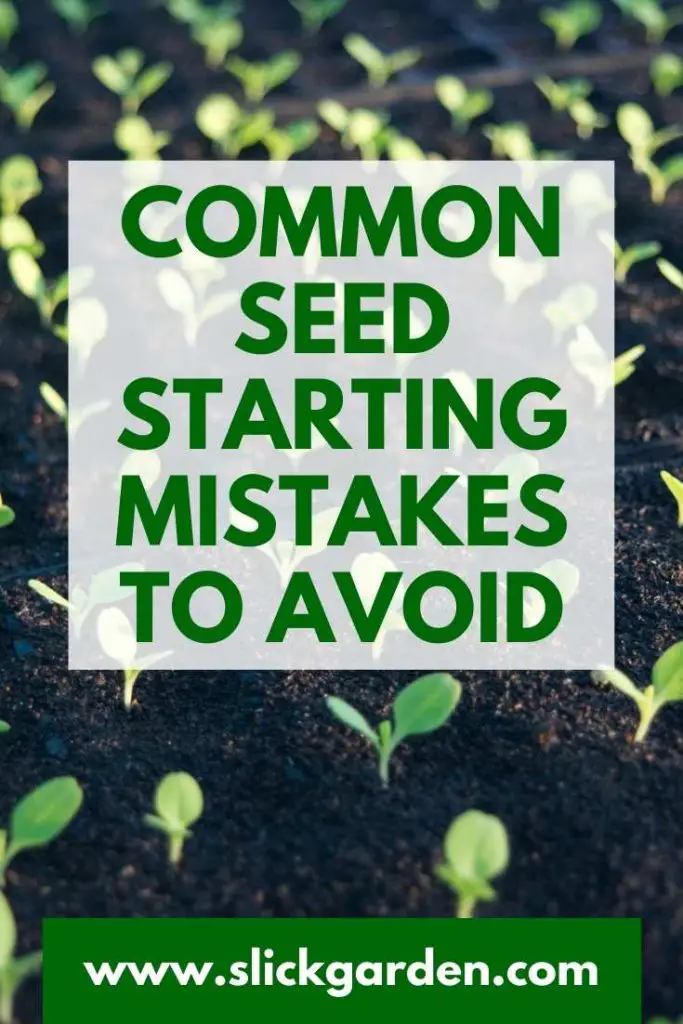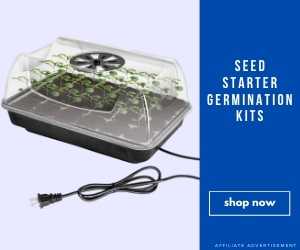Every gardener wishes to get his dream Garden. But sometimes little mistakes especially related to seed starting will ruin their dream. If we avoid search mistakes then we will be able to get the output of our favorite plants which maybe flowers, vegetables, herbs, and even fruits.
Every gardener tries to grow his plants according to his needs, requirements, and preferences, for example, some like to grow in pots and trays and some use soil blocks, biodegradable cups, or even eggshells to grow their seed starting.
Whatever the method you adopt you should do it in the best way to avoid any mistake otherwise you will not succeed to achieve your desired conclusion. The result of not following instructions is that your seeds may not sprout or you will get seedlings that are unhealthy or weak. The other result of this carelessness is that your plants may even die.

Here, we are going to discuss some serious mistakes which should be avoided while you are growing your seed starting. We will discuss one by one all these mistakes and will give solutions for all these mistakes. Hope you will follow them and get better yields.
STARTING SEEDS AT WRONG TIME
Time is an important key to success for getting better yield. If you start growing the seed at the wrong time, how can you grow your favorite plant? First, you should select the plants according to the weather conditions in your area. Because some plants love hot environments while some like cool seasons.
The preferred growing condition of every plant is different so you should be careful and try to choose the plants according to their growing seasons. Because the variety you choose to grow will be happy when it gets a particular growing zone.
After deciding the right plants for your garden or growing area the next step is to come when to sow the seeds. Start seeds too early or too late both are not good for your plants. You can get the basic information from the description on the seeds packages, catalog, or website listing.
The detailed instructions are given for the timing of sowing seeds on the packages, for example, you can get the basic information on when to sow seeds. Generally, packages have information that you should sow seeds before or after the last spring frost date. It means that you should be familiar with your first and last frost date while you are starting sowing your seeds.
Read More: 20 Easy Seeds To Grow In A Cup: Seeds to Sow & Grow with Kids
NOT READING THE SEED PACKAGES
If you don’t read the information given on the seat package. It is a wrong act because in this way you will not get the valuable knowledge about the seeds which you are going to sow. The information you get from the packet is about a time when you sow the seeds, how deep to sow particular types of seed and other information such as plant spacing and more.
The germination rate is very helpful as you can get an idea of how many seeds you should expect to sprout. This information is very important before sowing seeds which you get from the package that’s why you must read it.
Read More: How To Grow Tomatoes From Seeds In Containers

USING THE WRONG SOIL OR POTTING MEDIUM TO SOW SEEDS
You read all the information provided on the package of seeds and sowed the seeds at the perfect time but if you used any old soil to start seeds, it is another common mistake that should be avoided. Old soil will become the reason for introducing diseases or pests to your new seedlings. If your soil is not well-drained or less-than-ideal texture then your seed will fail to sprout at all. Because you are using the wrong soil for getting a good yield.
You can avoid this problem by using high-quality potting means to start seeds. Good quality soil has the right and fluffy texture to promote the germination of your plants and the roots of your plants will grow easily in this soil and is free from pests and diseases. For the development of the seeds, you should provide all the basic nutrients to them and this can be done by using high quality and frequently using fertilizer.
Read More: How To Make Potting Soil At Home For Container Gardening
NOT PROVIDING WARMTH TO SEEDS
Most types of seeds need temperatures ranging from 70 to 80 Fahrenheit. A suitable temperature is a very important factor in the germination of seeds. In this way, they can sprout readily and it becomes possible for them to move on to the next stages of growth. The adequate temperature has much importance because without it the seeds will sprout sluggishly.
For this purpose, you should keep the seed trays in a warm location of your home. During the winter you should be more careful as compared to summer. A heat mat can solve your problem. It will consistently maintain the temperature of the soil.
Another way to warm the soil is to cover the containers in which you sowed the seeds. The heat and moisture will aid in rapid germination which is very helpful. But when they start sprouting you should uncover the containers because now they need light.
NOT PROVIDING ENOUGH LIGHT FOR SEEDLINGS
Inadequate light is an important factor in getting tall and lanky seedlings. Veggie seedlings need 12 to 16 hours of light and 8 hours of dark. If they do not get proper light they will become leggy for the search of better light. Leggy seedlings are very weak and it is a possibility that they will soon die.
If you want to prevent your seedlings from running leggy then you should place your containers on a bright sunny wall. But sometimes, especially in winter, when the days are very short your plants will not be able to get bright sunlight from the window. For this purpose, you need artificial lights that help to grow your seedlings well. There are different types of artificial lights available such as T-5 fluorescent lights which have reflectors, boxy lights, and slimmer light designed for this purpose.
Your seedlings will grow well under the maximum light exposure. Try to keep these lights just a couple of inches above the seedlings and When your plants grow then raise the light. If your seedlings once come leggy then you can’t make them short so you should be careful from the starting point when you sow the seeds.
Read More: How to Grow Strawberry from Seeds at Home
WATERING TOO MUCH, OR TOO LITTLE OR BOTH
Water is an important factor in the growth of plants. Without water, the plants will die in the same way, if you water too much the seedlings will also rot and die. Your plants will not be happy in the soggy soil and a wet environment can lead to fungal disease which results in the death of your plants. Overwatering is the most common mistake which most people do.
Inconsistent water will rot your plant, You avoid such problems and maintain the moisture level in the soil. You should pre-moisten your soil before adding seeds to your container. In this way, there is no need to water your plants after sowing the seeds. Another way to maintain the moisture is by using a humidity dome to cover the seedling trays. Plants always need regular and consistent water to sprout.

FERTILIZING SEEDLINGS INCORRECTLY
Let’s start you don’t need any fertilizer because of Arthas the food and nutrients which they need for routing. If you fertilize your seeds very soon then it would be harmful to seedlings. It doesn’t mean that you left your seeds without fertilizer for a long time after sprouting. You know nutrients are essential for the development of seedlings into a strong and healthy plant and fertilizer is a means of providing all basic nutrients which your plants need. Without these nutrients, your plants will be starved which is not good.
Only the first few weeks your seeds can live without fertilizer but after appearing, the first couple of true leaves, start feeding them. Seaweed and kelp fertilizer is the best for your plants. You can simply mix it with water and pour it into the trays and repeat this process every week.
Read More: How to Grow Lettuce from Seed At Home
NOT THINNING SEEDLINGS OR POTTING UP
Crowded or cramped seedlings are another issue. It is another common mistake as several sprouts will fight for nutrients, root space, and water. Air circulation and light are big problems for them. In this way, you will get which will not turn into healthy plants. Even when you transplant them into a garden bed they will not grow well.
There are different ways to prevent yourself from this problem. One is that you can pluck or pull out the unwanted seedlings. You should do this work before starting feeding or after a few weeks of sprouting. But at this time you should be careful and keep those seedlings which are strongest and healthy.
The other solution is that you should remove the cluster of sprouts from the small cell and plant them into a larger container. In this way, these seedlings will get a proper place to grow.

